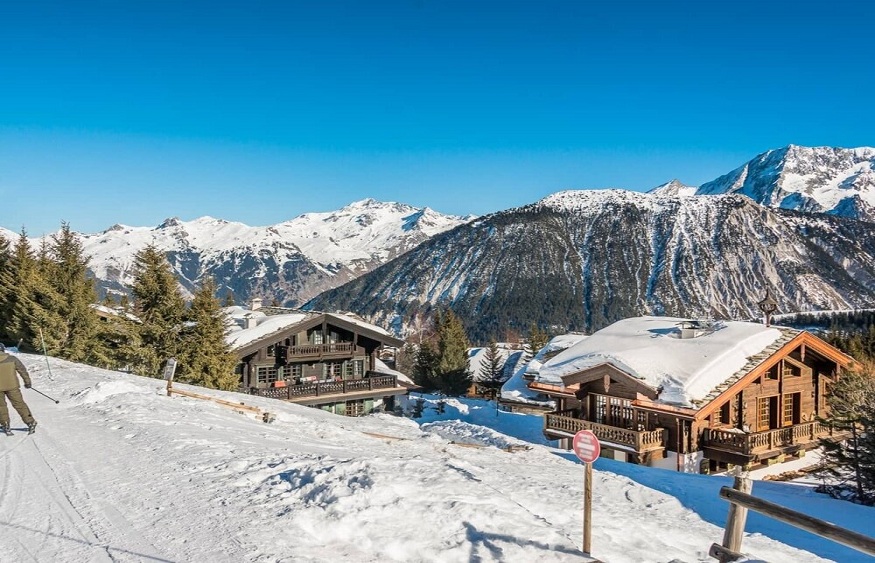Courchevel, a globally recognized name in winter sports and luxury tourism, is as much famed for its high-quality ski slopes as it is for its traditional and lavish chalets. Over time, these ski chalets have significantly evolved, mirroring the larger changes in the ski industry and societal expectations. Let’s take a historical journey to better understand how these architectural icons have morphed over time, adapting to the trends and requirements of each era.
The origins of Courchevel can be traced back to the post-war era of the 1940s, a time when winter tourism was a budding concept. The earliest chalets were humble in design and functionality, primarily serving as basic accommodations for skiers, with an emphasis on simplicity and proximity to the slopes. A typical chalet would embody the classic Savoyard style – a hearty and charming mix of stone and wood, offering a warm refuge from the snow outside.
The 1960s and 1970s brought with them the rise of mass tourism. To accommodate the surge in visitors, chalets started to increase in size and number, with a greater emphasis on comfort. Chalets evolved from simple dwellings to establishments providing a more comprehensive holiday experience, with amenities such as in-house dining facilities and ski equipment storage.
The late 20th century saw an influx of wealthy tourists to Courchevel, drawn by the resort’s reputation for excellent skiing and its burgeoning luxury market. Chalets began transforming into opulent residences, replete with premium facilities like heated indoor pools, private spas, gourmet kitchens, and expansive living spaces. Architecturally, they remained rooted in the traditional Savoyard style, but with a modern twist, seamlessly merging the rustic charm of the mountains with contemporary elegance.
In recent years, sustainability has come to the forefront of chalet design. Architects and builders are taking innovative steps to reduce the environmental impact of these structures, without compromising on luxury. Solar panels, geothermal heating, and locally sourced building materials are just a few examples of this new, eco-conscious approach.
The journey of Courchevel’s ski chalets has been a tale of constant evolution, reflecting shifts in societal trends, tourism demands, and environmental consciousness. From modest wooden cabins to luxury sustainable retreats, these architectural landmarks have grown in step with Courchevel’s reputation as one of the world’s premier ski destinations. Today, they stand not only as symbols of luxury and comfort but also as testament to the changing face of ski tourism and the resilient spirit of the Savoyard architectural tradition.

